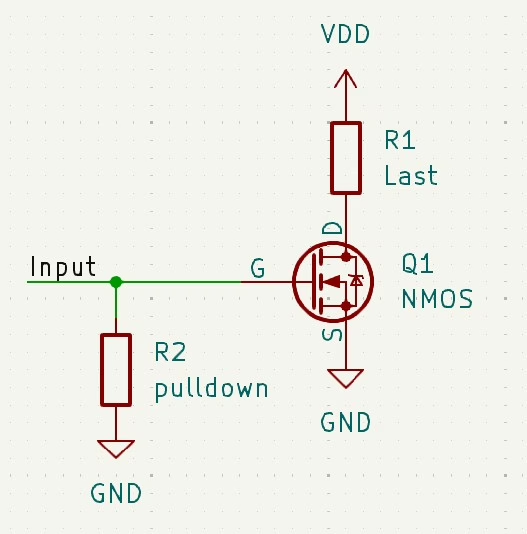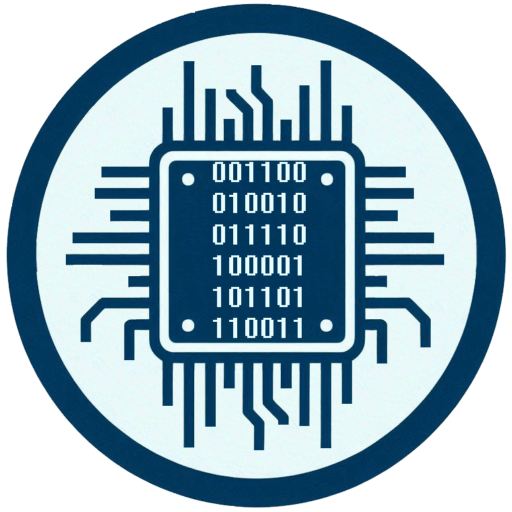N-channel or P-channel? How to choose the right MOSFET
-
18. May 2025
MOSFETs have become an integral part of modern electronics. They switch efficiently, quickly and almost loss-free - ideal for microcontrollers, motor controllers, power supplies or LED applications. But many are faced with the question: N-channel or P-channel? What is the difference - and when do you use which one?
In this article, you will learn in an understandable and practical way:
How a MOSFET works
The difference between N-channel and P-channel
When you should use which type
What you need to look out for when choosing
What is a MOSFET?
A MOSFET (Metal-Oxide-Semiconductor Field-Effect Transistor) is a voltage-controlled voltage-controlled switch.
Unlike bipolar transistors (NPN/PNP), which require current at the base, the MOSFET is controlled via voltage at the gate controlled – almost currentless.
A MOSFET has three connections:
Gate (G) - Control input
Drain (D) - Current input
Source (S) - Current output
A signal at the gate determines whether current flows between the drain and source.
Side note: The name “MOSFET” comes from “metal-oxide-silicon field-effect transistor”, but historically refers to older manufacturing processes. Modern MOSFETs often use other materials (e.g. polysilicon or high-κ dielectrics), so the term “MOS” is now more traditional than technically precise.
N-channel vs. P-channel - the difference
| Characteristic | N-channel MOSFET | P-channel MOSFET |
|---|---|---|
| Switching position | As a rule Low Side | As a rule High Side |
| Gate voltage (to source) | Must be positive | Must be negative |
| Resistance (RDSon) | Very low (efficient) | Higher than N-channel |
| Logic level control | Directly with 5 V / 3.3 V possible | Only via level converter or driver |
| Usage | Standard for GND switching | When the supply is switched |
When do I use which type of MOSFET?
N-channel: The standard for microcontroller circuits
N-channel MOSFETs are more efficient and more universally applicable. You can find them in:
LED circuits (PWM)
Relay controls
DC motors
DC/DC converters
They usually sit on the low side – i.e. between load and ground (GND). Advantage: You can control them directly with 3.3 V or 5 V from the microcontroller if you choose the right type (e.g. Logic-level MOSFET).
Example:
Source to GND
Drain to negative pole of the load
Gate via pull-down + controller output → Gate HIGH = switches
P channel: If you want to switch positive
P-channel MOSFETs are used when you need to switch the positive supply voltage. This is often the case with battery circuits or power supplies where the ground should remain connected throughout.
They usually sit on the high side - i.e. between supply and load.
But: To switch it on, the gate must be lower than Source - this makes the control more complex. You need either:
a Gate driver module
or level shift (e.g. with NPN transistor)
What you should look out for with MOSFETs
| Characteristic value | Bedeutung |
|---|---|
| RDSon | Forward resistance → The smaller, the more efficient |
| VGS(th) | Threshold voltage → Must be below your control voltage |
| VDS max | Max. Voltage between drain and source |
| ID max | Max. Current that the MOSFET may switch |
| Gate charge (Qg) | Affects switching speed |
Tip: Look out for the term “Logic Level MOSFET” in microcontroller projects - these types are sure to switch at 3.3 V or 5 V at the gate.
Important: Never leave the gate “in the air”!
As the gate has an extremely high impedance, it can be charge electrostatically or randomly “switch” due to environmental interference.
→ Always connect to ground with a pull-down resistor (e.g. 10 kΩ), if the gate is not actively controlled.
This prevents unintentional switching - particularly important for switch-on behavior and in safety-relevant applications.
Practical example: N-channel MOSFET as a low-side switch

Special MOSFET variants
But this will not be discussed in detail for the time being...That is a topic for a more advanced article...Power MOSFET (general)
-
Design: Optimized for high voltages and currents (e.g. vertical structure).
-
Advantage: Robust, good switching performance.
-
Application: Motors, chargers, energy conversion.
TrenchFET (Trench MOSFET)
-
Structure: Vertical structure with “trenches” in which the gate is embedded.
-
Advantage: Very low switch-on resistance (RDS(on)), ideal for power management.
-
Usage DC-DC converter, motor control, battery management.
VMOS / V-MOSFET
-
Structure: V-shaped groove structure for gate channel.
-
Advantage: Higher current density than planar MOSFETs, but rare today.
-
Usage Historically used in audio amplifiers etc., today rather replaced by TrenchFET.
Superjunction-MOSFET
-
Structure: Alternating p- and n-columns in the drift zone for field distribution.
-
Advantage: Combination of low RDS(on) and high dielectric strength.
-
Usage Switching power supplies, industrial power supplies.
LDMOS (Laterally Diffused MOSFET)
-
Structure: Lateral structure, usually on HF-optimized substrate.
-
Advantage: Good for high frequencies and medium voltages.
-
Usage RF amplifiers, mobile radio, broadcasting.
CoolMOS (Infineon-Marke, Superjunction-Typ)
-
Structure: Proprietary type of the superjunction principle.
-
Advantage: Very low switching losses at high voltages.
-
Usage Power supply units, LED drivers, server power.
You can also find MOSFETs here in the store
Conclusion: N-channel or P-channel? That's the difference
In 90 % of microcontroller and DIY circuits, an N-channel MOSFET is the better choice:
More efficient
Cheaper
Easier to control
A P-channel MOSFET is useful if you want to switch on the high side - but note the more complex control.
If you know the difference, you can use MOSFETs in a targeted manner - and have a powerful tool for modern electronics in your hands.

